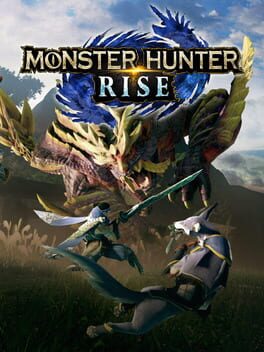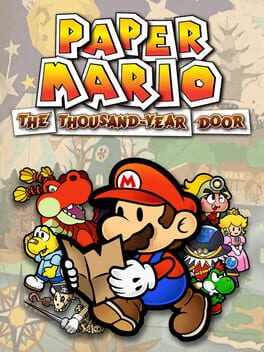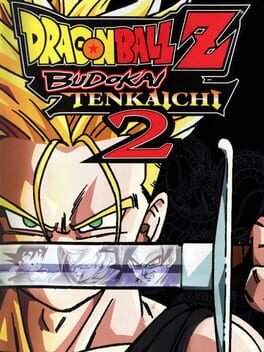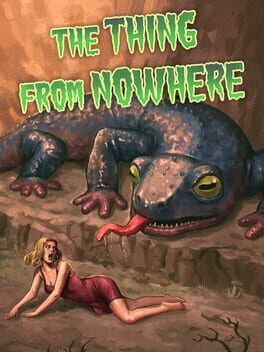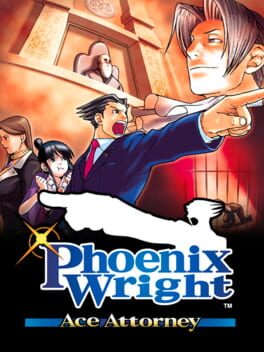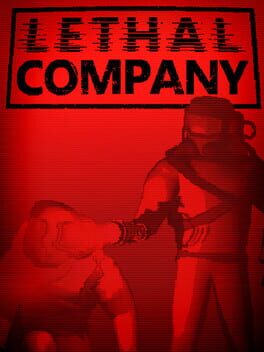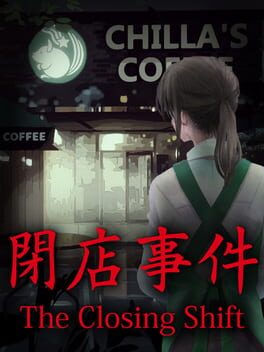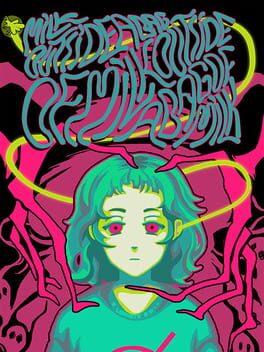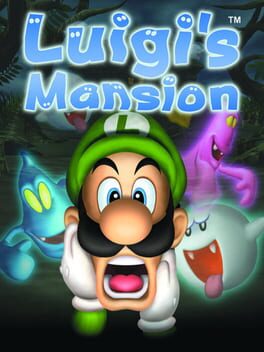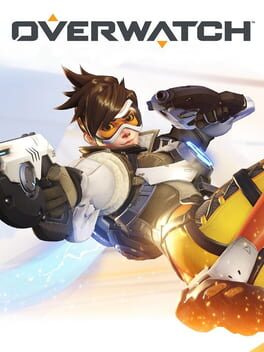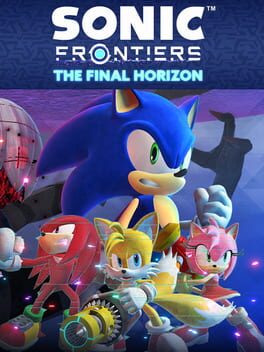compressedjpeg
2021
Played mostly in single player, reached HR 25 after 60 hours of gameplay. It's a good game with satisfying mechanics (especially the wirebug), but incredibly grindy. When I realized how much farther I'd have to go to reach the "true" final boss of the base game, I decided to just call it there and mark it complete on my backlog.
*Played to credits, haven't gone out of my way to complete the Special World.
It's a grand old time. I played the whole game in co-op with my sister and had a blast with it, with no two levels sharing the same identity in an effort to break away from the homogenized NSMB formula. The music and visuals are peak whimsy.
The only knock against it is that the game feels at times painfully easy with a few exceptions, which I somewhat understand given the young target demographic. I only wish the actual hard platforming--like the Special World levels I only stumbled upon occasionally--was less of a chore to unlock.
It's a grand old time. I played the whole game in co-op with my sister and had a blast with it, with no two levels sharing the same identity in an effort to break away from the homogenized NSMB formula. The music and visuals are peak whimsy.
The only knock against it is that the game feels at times painfully easy with a few exceptions, which I somewhat understand given the young target demographic. I only wish the actual hard platforming--like the Special World levels I only stumbled upon occasionally--was less of a chore to unlock.
At the Switch's launch, Breath of the Wild was a revolution for the 3D Zelda formula and open-world adventure games in general. Six years later, the direct sequel Tears of the Kingdom arrives not as an attempt to catch lightning in a bottle twice, but rather refine a solid foundation to near-perfection. With its incredible scope in world across the land, underground, and sky, plus the wealth of content, this is Nintendo at peak performance. For those who enjoyed BoTW, it's a must play that hits all the right notes, though by the end, I wish it was a little more adventurous in the story department.
Starting with gameplay--if you're familiar with how Breath of the Wild handles, then you should have no trouble picking up Tears. But if you haven't played the first game, combat is a snappy affair, rewarding your ability to hit those perfect dodges as well as your preparation for any individual encounter of trash mobs or big overworld bosses; on the other end, traversal will see you climbing mountains and conquer hostile, yet beautiful terrain to fill out the world map. Quality of life improvements include being able to select your slate/pad powers from a wheel menu for faster switching, three unlockable travel medallions instead of just one, and a MUCH more consistent stock of elemental arrows. The new slate powers are a discard-and-draw from Breath of the Wild's old power set, but on the whole, you'll find that the utility is much more pronounced: cryonis will not be missed. For better or for worse, most mechanics are left untouched from the prior game: weapon durability, leveling up through shrines, and cooking is just as you remember it. I won't pour over every change, but the ability to jam weapons and spare parts together was a genius way to keep the grind from getting stale, and I applaud the dev team for it.
Moving onto aesthetics, the game's visual appeal is top-notch, able to balance soft beauty with the grotesque. The gentle yellow hues of the Sky Island, smattered with relics of a bygone golden age, contrast wonderfully with the foreboding darkness of subterranen Hyrule, a monster-ridden hellhole with vast gulches and stone spires. The character designs were also a huge hit: King Rauru sells the image of a formidable warrior-sage with his tall stature and cool threads, and the new take on Ganondorf is fresh (...rotten?) both as a dessicated corpse or a revived demon king. I can't say much for the soundtrack other than "it's good," always enough to carry an area's ambience—my personal favorite being the main theme. As for vocal performances (ENG), Matthew Mercer absolutely kills it as Ganondorf, but I don't think you needed to hear that from me.
The story is where it loses me, if only slightly. I love the backstory of Hyrule in its infancy, with Rauru and Sonia as the first rulers. But the present story lacks for me. The Sages barring Zelda herself aren't compelling characters, relegated to an obligatory dungeon and predictable trajectory to joining your cause of defending Hyrule. Compared to the Champions of Breath of the Wild, the characters are remarkably flat despite working with similar screentime. Ganondorf doesn't display much depth beyond a lust for power, and although I love his dominating presence in any scene he's in, I wish we got something more out of him. Link is in a similar spot, likable, but lacking character moments outside of his protectiveness for Zelda; this is a little less excusable, given that this is the second game we're commandeering this character over a LONG game, and he still feels emotionless half the time. Wind Waker and Twilight Princess both handled the Silent Protagonist trope better, both of it through expressions.
Despite my gripes with the plot, when the game wants to do big, cinematic moments, it succeeds with aplomb. Several sequences in the game elicit gasps, and a lot of shots were entirely screenshot-worthy. What it lacks on the character front, it compensates for in utterly beautiful presentation, especially at the climax, which I consider a marked improvement over Breath of the Wild.
Taken as a whole, Tears of the Kingdom is a game worth experiencing, a once-in-a-lifetime epic in the medium. The things that made Breath of the Wild great are acknowledged and improved upon in the sequel, preserving the same sense of wonder to compel the player forward.
Starting with gameplay--if you're familiar with how Breath of the Wild handles, then you should have no trouble picking up Tears. But if you haven't played the first game, combat is a snappy affair, rewarding your ability to hit those perfect dodges as well as your preparation for any individual encounter of trash mobs or big overworld bosses; on the other end, traversal will see you climbing mountains and conquer hostile, yet beautiful terrain to fill out the world map. Quality of life improvements include being able to select your slate/pad powers from a wheel menu for faster switching, three unlockable travel medallions instead of just one, and a MUCH more consistent stock of elemental arrows. The new slate powers are a discard-and-draw from Breath of the Wild's old power set, but on the whole, you'll find that the utility is much more pronounced: cryonis will not be missed. For better or for worse, most mechanics are left untouched from the prior game: weapon durability, leveling up through shrines, and cooking is just as you remember it. I won't pour over every change, but the ability to jam weapons and spare parts together was a genius way to keep the grind from getting stale, and I applaud the dev team for it.
Moving onto aesthetics, the game's visual appeal is top-notch, able to balance soft beauty with the grotesque. The gentle yellow hues of the Sky Island, smattered with relics of a bygone golden age, contrast wonderfully with the foreboding darkness of subterranen Hyrule, a monster-ridden hellhole with vast gulches and stone spires. The character designs were also a huge hit: King Rauru sells the image of a formidable warrior-sage with his tall stature and cool threads, and the new take on Ganondorf is fresh (...rotten?) both as a dessicated corpse or a revived demon king. I can't say much for the soundtrack other than "it's good," always enough to carry an area's ambience—my personal favorite being the main theme. As for vocal performances (ENG), Matthew Mercer absolutely kills it as Ganondorf, but I don't think you needed to hear that from me.
The story is where it loses me, if only slightly. I love the backstory of Hyrule in its infancy, with Rauru and Sonia as the first rulers. But the present story lacks for me. The Sages barring Zelda herself aren't compelling characters, relegated to an obligatory dungeon and predictable trajectory to joining your cause of defending Hyrule. Compared to the Champions of Breath of the Wild, the characters are remarkably flat despite working with similar screentime. Ganondorf doesn't display much depth beyond a lust for power, and although I love his dominating presence in any scene he's in, I wish we got something more out of him. Link is in a similar spot, likable, but lacking character moments outside of his protectiveness for Zelda; this is a little less excusable, given that this is the second game we're commandeering this character over a LONG game, and he still feels emotionless half the time. Wind Waker and Twilight Princess both handled the Silent Protagonist trope better, both of it through expressions.
Despite my gripes with the plot, when the game wants to do big, cinematic moments, it succeeds with aplomb. Several sequences in the game elicit gasps, and a lot of shots were entirely screenshot-worthy. What it lacks on the character front, it compensates for in utterly beautiful presentation, especially at the climax, which I consider a marked improvement over Breath of the Wild.
Taken as a whole, Tears of the Kingdom is a game worth experiencing, a once-in-a-lifetime epic in the medium. The things that made Breath of the Wild great are acknowledged and improved upon in the sequel, preserving the same sense of wonder to compel the player forward.
1994
Replayed on official hardware. Maybe it's just my familiarity with the game, but it feels a lot smoother than my first go. Definitely less deaths. Excited to replay Zero Mission onward for the QoL changes.
There's something addictive about SM's core gameplay loop. You can never just settle for one upgrade when you sit down and play it.
There's something addictive about SM's core gameplay loop. You can never just settle for one upgrade when you sit down and play it.
I beat it in the span of about two hours. It's advertised as like a VN or a CYOA, but after my first playthrough I realized the game is really linear. I went out of my way to make dumb choices to get myself killed, but the narrative bailed me out every time. The soundtrack is serviceable, but generic. The character sprites are very well drawn, but there's only one per character with no expression or pose changes whatsoever. The monster on the cover art? You only see it described through text in game. The background art, depicting a rural town in 1950s Alaska, is pretty good.
I can say I at least liked the story. The survivalist character is a total bro who I got attached to in the short runtime, and it kept up a good pace. Would have made for a good horror B-Movie in the nineties. But as a video game, it does the absolute bare minimum to qualify as one.
I can say I at least liked the story. The survivalist character is a total bro who I got attached to in the short runtime, and it kept up a good pace. Would have made for a good horror B-Movie in the nineties. But as a video game, it does the absolute bare minimum to qualify as one.
Question: how do you make a visual novel fun to play? Not read. Play.
Ace Attorney resolves the age-old question by making you an active participant in the courtroom drama that unfolds: that is to say, the plot doesn't move until you make the deductions, talk to the right people, or point out a contradiction. It's part brain-teaser, part trying to guess the conclusion the game is trying to lead you to, and it works...for the most part. More on that later.
The highlights of this game are easily the characters. Given life by an amazing script (props to the localizers) and iconic designs, you get invested in the over-the-top sparring between Wright and Prosecutor Miles Edgeworth. Every side character is distinguished with weird mannerisms, especially the culprits of each case who you get to sweat and break down over the course of a trial. The game also operates on the simplest, most theatrical interpretation of the law, but I wouldn't have this eccentric anime soap opera any other way.
As for the negatives, they unfortunately stem from the gameplay. Investigation is easily the more dull half of the game (and the trilogy as a whole), mostly consisting of point and click segments to find evidence and dialogue trees to get clues. It feels like moving from Point A to Point B and shoving evidence in the other character's faces until you hit the right flag and get to progress the plot. Compare that to the Court segments, which have an actual game over state for trying to brute force it (albeit easily circumvented by save scumming), and one clearly stands head and shoulders over the other. The court segments are much more animated and fun, but they sometimes suffer from feeling too "on rails" when you want to question something, but the game is clearly nudging you towards another contradiction that can't wait--alas, a constraint of the medium.
All this to say that Phoenix Wright: Ace Attorney and its sequels Justice For All and Trials and Tribulations are a collective masterpiece that must be experienced for themselves. Capcom has re-released this sum'bitch like ten different ways now, so there's no excuse for not having played it.
Ace Attorney resolves the age-old question by making you an active participant in the courtroom drama that unfolds: that is to say, the plot doesn't move until you make the deductions, talk to the right people, or point out a contradiction. It's part brain-teaser, part trying to guess the conclusion the game is trying to lead you to, and it works...for the most part. More on that later.
The highlights of this game are easily the characters. Given life by an amazing script (props to the localizers) and iconic designs, you get invested in the over-the-top sparring between Wright and Prosecutor Miles Edgeworth. Every side character is distinguished with weird mannerisms, especially the culprits of each case who you get to sweat and break down over the course of a trial. The game also operates on the simplest, most theatrical interpretation of the law, but I wouldn't have this eccentric anime soap opera any other way.
As for the negatives, they unfortunately stem from the gameplay. Investigation is easily the more dull half of the game (and the trilogy as a whole), mostly consisting of point and click segments to find evidence and dialogue trees to get clues. It feels like moving from Point A to Point B and shoving evidence in the other character's faces until you hit the right flag and get to progress the plot. Compare that to the Court segments, which have an actual game over state for trying to brute force it (albeit easily circumvented by save scumming), and one clearly stands head and shoulders over the other. The court segments are much more animated and fun, but they sometimes suffer from feeling too "on rails" when you want to question something, but the game is clearly nudging you towards another contradiction that can't wait--alas, a constraint of the medium.
All this to say that Phoenix Wright: Ace Attorney and its sequels Justice For All and Trials and Tribulations are a collective masterpiece that must be experienced for themselves. Capcom has re-released this sum'bitch like ten different ways now, so there's no excuse for not having played it.
2023
2022
Like many short visual novels of its ilk, it's more of an experience than a game, but I wouldn't hold it against MILK too much. You can get all the endings in about two or three hours, so you'll be done pretty fast, but it's a nice, compact experience set in a gloomy, oppressive apartment. It's very meta in acknowledging common trappings of visual novels and point-n-click games, but not in a stuffy, pretentious way. You mostly just want to see this poor girl safe, even if you, the player, can't do too much to help her.
2001
Gonna try to challenge myself to articulate why I like this game without saying "mood," "atmosphere," or "ambience."
This game really was a risk: a gamble on a popular IP, breaking from the established platforming formula--and as a launch title, no less. And god damn, it worked.
Luigi's Mansion gameplay is half exploratory puzzle-solving and half fishing minigame disguised as ghost vacuuming. These two halves work seamlessly off each other, as 99% of your interactions with the environment come from the Poltergust (the aforementioned vacuum cleaner) anyway. Catching ghosts is a thrilling affair, especially when you have to wrangle multiple at once while dodging their attacks, getting dragged along in their desperate flailing to escape.
The titular mansion, too, is such an inspired locale. It really does feel "lived in" and not just a video game level, if you catch my drift. Keeping the target demographic in mind, it's not scary, but certainly spooky, all its dark hallways teeming with mischievous spirits. Luigi, ever the lovable coward, is the perfect choice of protagonist for this sort of haunt: a match made in heaven.
The game can be beaten in a matter of hours, with an unlockable hard mode upon completion. Highly recommend.
This game really was a risk: a gamble on a popular IP, breaking from the established platforming formula--and as a launch title, no less. And god damn, it worked.
Luigi's Mansion gameplay is half exploratory puzzle-solving and half fishing minigame disguised as ghost vacuuming. These two halves work seamlessly off each other, as 99% of your interactions with the environment come from the Poltergust (the aforementioned vacuum cleaner) anyway. Catching ghosts is a thrilling affair, especially when you have to wrangle multiple at once while dodging their attacks, getting dragged along in their desperate flailing to escape.
The titular mansion, too, is such an inspired locale. It really does feel "lived in" and not just a video game level, if you catch my drift. Keeping the target demographic in mind, it's not scary, but certainly spooky, all its dark hallways teeming with mischievous spirits. Luigi, ever the lovable coward, is the perfect choice of protagonist for this sort of haunt: a match made in heaven.
The game can be beaten in a matter of hours, with an unlockable hard mode upon completion. Highly recommend.
2016
I'll be honest; I miss Overwatch 1.
It's the McDonald's of triple-A games, but a nice McDonald's, with a kiosk that lets you choose between Coke and Cherry Coke.
Dropping the metaphor--it had a good map variety and encouraged some real coordination between your team to win. It wasn't perfect, granted: a lot of the time it was just throwing yourself at a chokepoint until the timer ran out and you spilled your SR spaghetti.
Still, I have fond memories of this game in high school at launch, and I think some of that character died with Overwatch 2. Bring back 6v6 with two tanks in role queue, you damn cowards.
It's the McDonald's of triple-A games, but a nice McDonald's, with a kiosk that lets you choose between Coke and Cherry Coke.
Dropping the metaphor--it had a good map variety and encouraged some real coordination between your team to win. It wasn't perfect, granted: a lot of the time it was just throwing yourself at a chokepoint until the timer ran out and you spilled your SR spaghetti.
Still, I have fond memories of this game in high school at launch, and I think some of that character died with Overwatch 2. Bring back 6v6 with two tanks in role queue, you damn cowards.
Tails, Amy, and Knuckles suck. The game was designed with Sonic's movement in mind, and their kits feel so half-baked in this last area.
The towers are decently challenging; half of them had me pulling hair but the other half were solid.
The worst of it was the MANDATORY boss rush that puts you on 400 rings(!) with perfect parry only(!!!).
Final boss is dope though and almost redeems it. But not quite.
The towers are decently challenging; half of them had me pulling hair but the other half were solid.
The worst of it was the MANDATORY boss rush that puts you on 400 rings(!) with perfect parry only(!!!).
Final boss is dope though and almost redeems it. But not quite.
